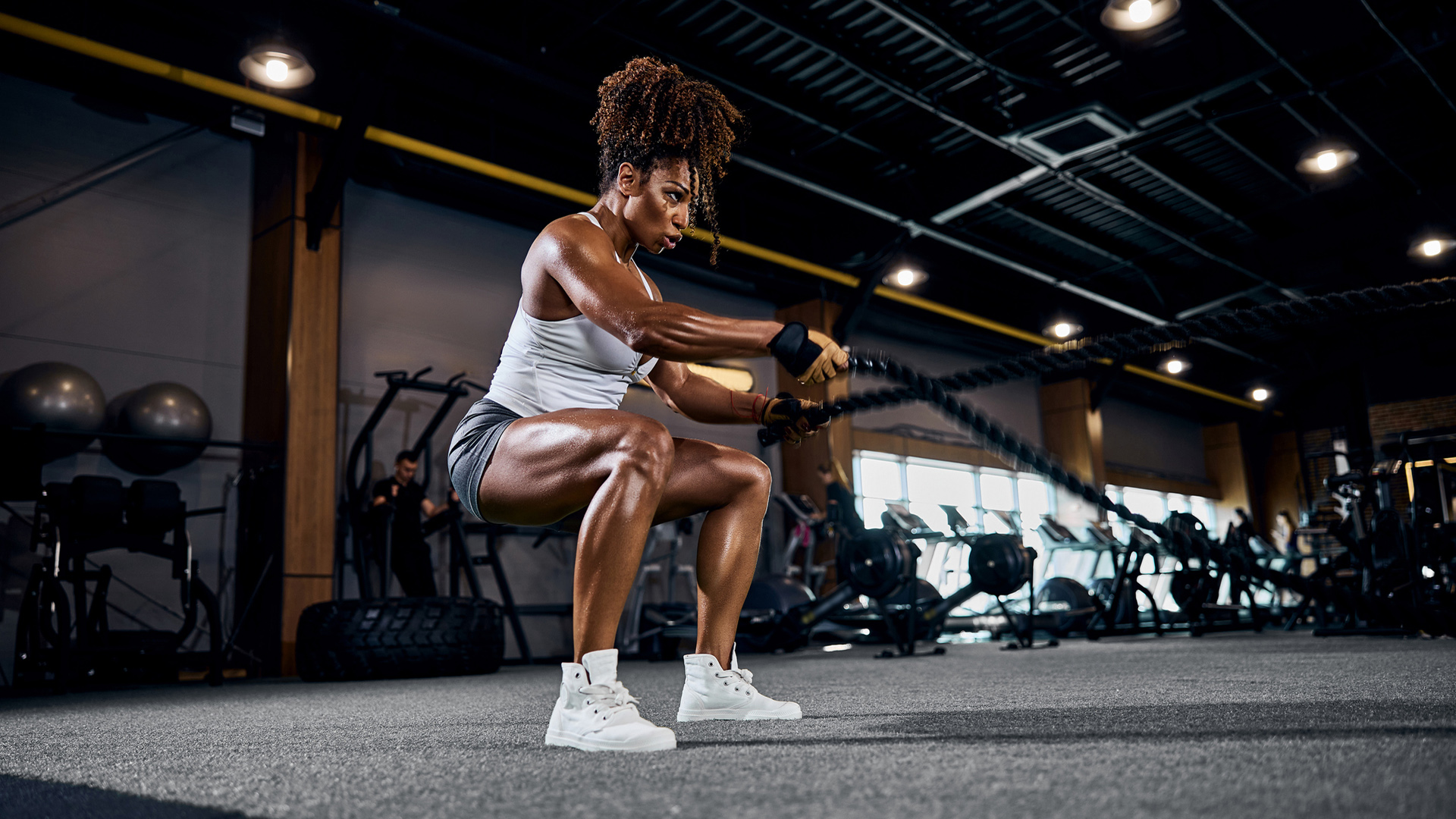To improve grip strength, I tried battle rope workouts – and they are ultra-efficient
I recently tried battle ropes and I'm never going back to not using them for my workouts


I'm no stranger to battle ropes and exercises that improve grip strength, but I was unaware of them being a match made in heaven until recently. Sure, I know full well that battle ropes require you to have a decent grip, and they are also a fantastic tool to improve core strength. But I couldn't imagine a few battle rope sessions could cause DOMS in my forearms. No, seriously.
As it happens, I attended a fun fitness BootCamp in Brighton the other week (the NewWave Wellbeing Retreat, if anyone's interested), which involved sitting in an ice bath for two minutes for the first time in my life (more on this later), attending nutrition classes and various workout sessions. Two of these sessions involved using battle ropes which are heavy, long fitness cables.
If you haven't tried battle ropes before, you really should. They are often used for HIIT workouts and are excellent tools to lose belly fat and build strength. You'll usually be required to make a waving motion, either vertically or horizontally, and move the ropes around as vigorously as possible. This compound movement uses multiple muscle groups and tires you out quickly.
During my training sessions, I did single arm battle rope waves as well as kneeling battle rope chops; the latter is an awesome way to train the obliques and get six-pack abs faster. Sadly, I still haven't got a six-pack, but now I know that doing these exercises can help you exhaust your grip completely.
Now, you might think, "Okay, Matt, whatever, I'll just keep doing deadlifts and pull-ups; those exercises would work my grip just fine." I understand; this was my exact thought before going on the BootCamp. Not to mention, as someone who completed the 100 pull-ups a day challenge, I'd like to think I had an okay grip. I do deadlifts with one and a half times my bodyweight, too.
Yet, doing just a couple of different battle rope workouts made my forearms run for their money. I couldn't grip properly for the next two days! I was the most surprised of all people. Naturally, my body was broken in various ways after the BootCamp (my quads were not in a happy place after all the squats and lunges), but I didn't expect my forearm to be totalled. Damn!
Why should you care about strong grip?
Having a solid grip can come in handy more often than you think. Yes, it will help you hang for longer from a bar or a cliff edge, but according to a research paper from 2019, "grip strength is largely consistent as an explanator of concurrent overall strength, upper limb function, bone mineral density, fractures, falls, malnutrition, cognitive impairment, depression, sleep problems, diabetes, multimorbidity, and quality of life."
Get all the latest news, reviews, deals and buying guides on gorgeous tech, home and active products from the T3 experts
This means that people with strong grips are generally healthier, and a weak grip can be a sign of various adverse health conditions. "The connections between HGS and overall health and vitality among both men and women have long been recognized", says another paper from 2018, "handgrip strength correlates with numerous measures involved in social and sexual competition in men." According to evolutionary biology, if you're a man, a firm grip can make you a more attractive mate. Go figure!
Admittedly, battle rope workouts are not the most neighbour-friendly way to improve grips strength. Not many apartments are soundproof enough to enable you to use this fitness tool indoors, but if you have a garden or access to a public park, you should definitely give them a try.
Alternatively, farmer carries can also improve grip strength, and you can use dumbbells or kettlebells for that exercise (you'll need some space to walk around, though). Dead hangs will do the same; you might want to get a pull-up bar to do those.
Finally, even if you decide to start battle rope training, I recommend switching things up now and then and using different exercises to help the forearm muscles grow. Haven't got a battle rope? No problem. Have a look at the best battle rope deals below.

Matt Kollat is a journalist and content creator who works for T3.com and its magazine counterpart as an Active Editor. His areas of expertise include wearables, drones, fitness equipment, nutrition and outdoor gear. He joined T3 in 2019. His byline appears in several publications, including Techradar and Fit&Well, and more. Matt also collaborated with other content creators (e.g. Garage Gym Reviews) and judged many awards, such as the European Specialist Sports Nutrition Alliance's ESSNawards. When he isn't working out, running or cycling, you'll find him roaming the countryside and trying out new podcasting and content creation equipment.